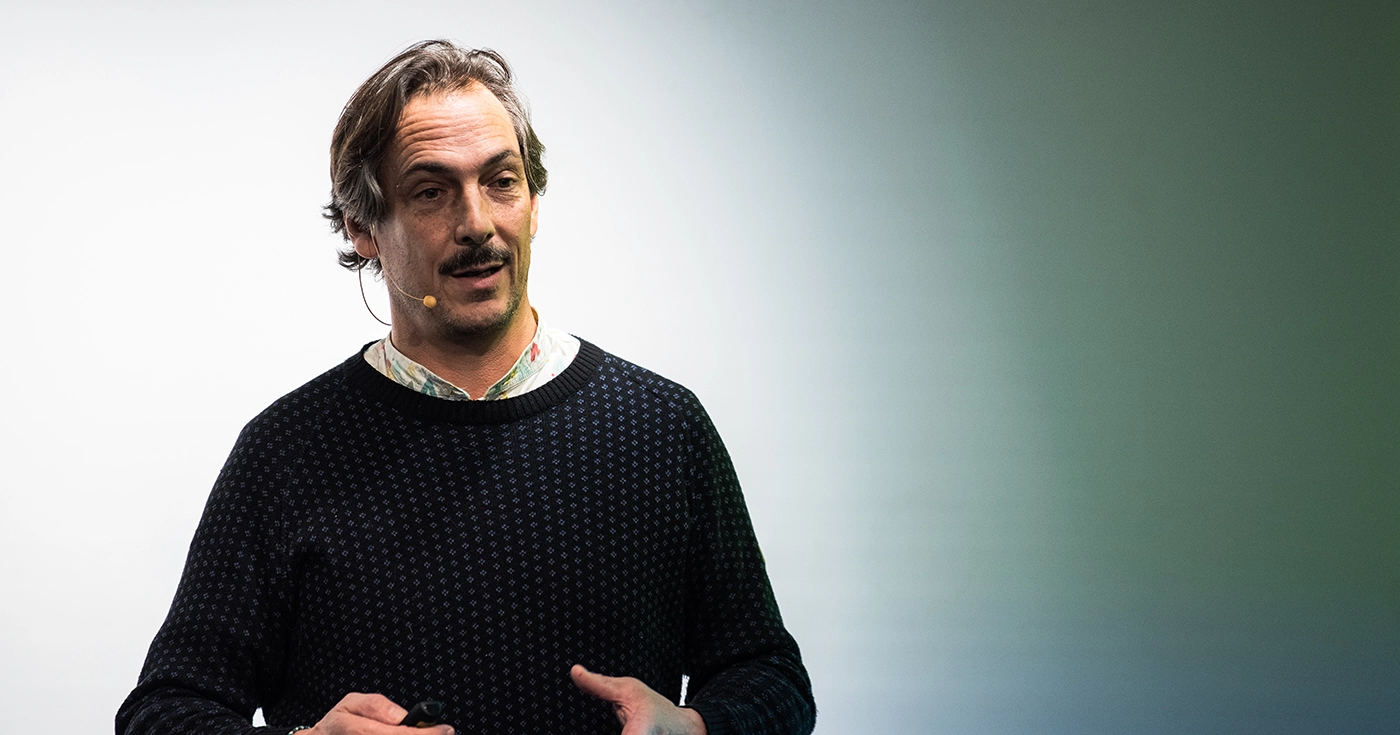
Distrito Natural: eco-friendly and collaborative housing for a sustainable future
Last Updated on 18 September 2025 by Equipo Urbanitae
In a real estate sector marked by the urgency of addressing both the housing shortage and the climate crisis, projects are emerging that propose a paradigm shift. Distrito Natural, led by architect and CEO Iñaki Alonso, advocates for an ecological and collaborative housing model that combines energy efficiency, community, and sustainability. In this interview, Alonso explains how decarbonization, social innovation, and the creation of new residential models are transforming the way we conceive of our homes.
What motivated you to launch a real estate project like Distrito Natural, focused on reducing the environmental impact of housing?
After two decades of work with the architectural firm sAtt, we were convinced that it was possible to offer a new alternative in the real estate market: a housing model that minimized its ecological footprint while at the same time generating community and well-being.
For me, housing is a tool for environmental and social regeneration; a space that helps people live better and contribute to the planet’s future. In a sector that is generally very rigid and traditional, we saw the opportunity to promote a model that integrates savings, sustainability, and community.
You offer co-housing and coliving proposals. What are the differences between these two models, and what advantages do they have compared to traditional housing?
In both cases, the key lies in creating community and sharing spaces and services that enrich daily life, such as laundry rooms, urban gardens, coworking spaces, rooftop terraces, or photovoltaic energy production.
Coliving is aimed more at those seeking temporary rental stays, while co-housing is designed for stable private ownership projects, with strong community participation in the design and day-to-day management. This is the case of the Pirita development in Usera (Madrid), delivered in February 2025, and the Tomás Bretón building in Arganzuela, which we are about to complete.
We are also developing projects under a third model, cohousing, based on the right of use: a form of tenure halfway between buying and renting, where communities have even greater influence over decisions from the start of the project. This is the case of Entrepatios Las Carolinas (completed in 2020) and others we are currently developing in Rivas and Navalcarnero (Madrid).
What all these formats have in common is that they optimize resources, reduce environmental impact, and create richer community environments than traditional housing.
To what extent are these innovative formats transforming such a consolidated sector as real estate?
I believe we are introducing a different perspective into the sector, putting people and the planet at the center, and not just the real estate product itself.
By prioritizing sustainability and collaboration, we demonstrate that it is possible to live differently: in a way that is more consistent with today’s challenges, without sacrificing comfort or savings—quite the opposite.
Distrito Natural projects are designed for a future in which, for example, heat waves will be more frequent. Thanks to photovoltaic production, passive design, and energy efficiency, we ensure well-being at home with minimal utility bills.
We are not seeking to replace the traditional model, but rather to open new pathways that bring diversity, resilience, and positive impact to the way we live.
“The investment market in Spain is evolving towards greater appreciation of projects with ESG commitments.”
Decarbonization of the real estate sector is one of today’s major environmental challenges. How do you address it at Distrito Natural, and what does it mean for residents to live in a zero-carbon home?
At Distrito Natural, we understand decarbonization as a comprehensive commitment: from bioclimatic design and the use of low-impact materials to renewable energy production and full electrification of buildings.
We create homes that minimize emissions throughout their entire life cycle and offset the unavoidable ones, achieving carbon neutrality. For residents, this means living in more efficient, healthier, and more comfortable homes that reduce energy costs while actively contributing to protecting the planet.
In this regard, wood is one of our strongest allies and one of the most distinctive features of our projects. Instead of concrete and steel—which emit large amounts of CO₂ in their production and transport—we use wooden structures, a material that is not only sustainable but also acts as a carbon sink.
Energy efficiency is one of your trademarks. What kind of savings, both in energy and money, can a family expect when living in one of your developments?
Thanks to passive and bioclimatic design, the use of renewable energy, and high construction quality, a family can reduce its energy consumption by between 70% and 80% compared to a conventional home. This translates into much lower and more stable utility bills, as well as greater independence from fluctuations in the energy market.
In a 100 m² home, monthly bills range between €20 and €50, including heating, air conditioning, and hot water. This represents a significantly lower expense than that of a conventional home: around €1,400 less per year.
When buying a house with a 25- or 30-year mortgage, one doesn’t just take on financial debt: there’s also the risk of carrying an “energy mortgage.” From this perspective, a Distrito Natural home allows savings of up to €45,000 over 30 years.
What features or elements do you consider indispensable for a home to be truly sustainable?
We are clear that the cleanest—and cheapest—energy is always the one that isn’t consumed. But for a home to be truly sustainable, it’s not enough for it to be highly efficient in terms of energy or CO₂ emissions. It is necessary to analyze its entire life cycle: from the extraction of materials to the end of its useful life, considering different impacts such as water consumption, depletion of the ozone layer and other resources, or toxicity to people and ecosystems.
This analysis, which we conduct using the Ecómetro LCA tool, allows us to select low-impact materials, apply construction systems that extend the building’s durability, and develop a design that optimizes efficiency from the outset.
Another fundamental aspect is water consumption, especially in a future context of more frequent droughts. Distrito Natural homes save 30% of water thanks to a pioneering system of biological greywater reuse for irrigation and toilets.
“Eco-friendly and collaborative housing is viable, profitable, and replicable in different contexts.”
In a strained context, especially in large cities, do you think your model can help democratize access to housing?
Yes, precisely because one of the major problems in the real estate sector today is the lack of housing, particularly social and affordable developments. According to the Bank of Spain, there is a deficit of 600,000 new homes.
It is necessary to increase housing stock and make it affordable; however, we would miss a great opportunity if we didn’t do so while minimizing CO₂ emissions, preparing for the impacts of climate change, and ensuring affordability in use—so that heating and cooling don’t become a heavy economic burden.
To achieve this, we need the involvement of all stakeholders: from public institutions to real estate developers. In this regard, Distrito Natural and the association Provivienda have signed a collaboration agreement to promote affordable and social housing together with local and national administrations, and we already have several projects under study.
What are the main barriers you face today in the real estate sector when implementing your housing models?
The main barriers are related to a sector that is very rigid and accustomed to repeating traditional models. We are dealing with cultural inertia, complex regulations, and administrative processes that sometimes hinder innovation.
Another challenge—though increasingly less so—is finding financing and suitable land for sustainable and affordable projects. However, we have noticed significant improvement in recent years: value propositions like ours are increasingly recognized and appreciated, in line with what is happening in other advanced European countries.
The investment market in Spain is evolving toward greater appreciation of projects with ESG commitments, recognizing that integrating profitability with sustainability, social impact, and responsible governance is key to building trust and addressing current challenges.
What medium- and long-term goals do you have to continue promoting this model?
We are in the process of consolidating our current development model to keep demonstrating that eco-friendly and collaborative housing is viable, profitable, and replicable in different contexts, including outside cities, with rural regeneration projects like Vibio.land. At the same time, our goal is to scale this model by integrating it into public policies and collaborating with institutions to expand the stock of sustainable and affordable housing.
In the long term, we aim to become a benchmark in Spain and pave the way toward a future real estate sector aligned with decarbonization goals and the growing demand for projects with positive social and environmental impact. We believe that housing can and must be a driver of transformation and resilience.

